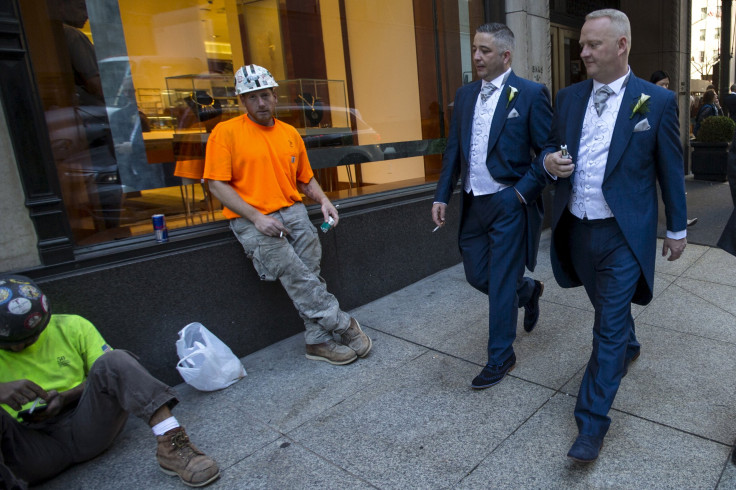Unemployment Report: What Happened To All The Construction Jobs?

It’s been a puzzling recovery. Six years since the peak of the financial crisis, jobs are returning, but the poverty rate is rising, and wages are stagnating.
Here’s another head-scratcher: One of the classic signs of a healthy economy is steady growth in the number of construction jobs. And yet, as the October jobs report shows, employment in the sector remains relatively low. Not since 1999 have so few workers -- around 6.4 million -- been employed in the construction industry.
The economy has added about a million construction jobs in the past few years, but the number remains far below the pre-recession peak of about 7.7 million. Few economists expect the U.S. to create construction work at the housing-boom pace of the mid-2000s, but in a labor market saturated with low-wage work, the dearth of these decent-paying jobs is especially painful.
“It would be great for the economy to have more jobs, period,” Elise Gould, senior economist at the left-leaning Economic Policy Institute, said. “But [construction] is a sector where there are so many benefits.”
For one, the pay is higher than in many of the service-sector jobs that have provided much of the job growth in the aftermath of the recession -- fields like restaurants and retail.
Average hourly earnings in construction hover around $27.40, according to the Bureau of Labor Statistics. That’s $2 more than average hourly earnings in the private sector overall. Construction refers to a broad swath of workers: carpenters, laborers, managers, electricians and equipment operators.
Many construction jobs are devoted to homebuilding -- and the labor markets vary widely, Mark Hamrick, senior economic analyst at Bankrate.com, said. “As with home sales, the question of employment is very much of a question of location, location, location.”
But in nonresidential settings, the creation of construction jobs can come with added social benefits.
“There’s so much infrastructure -- schools, roads, so many projects that we know we could get done -- and it’d be an improvement for the economy overall,” Gould said.
That multispoked argument -- jobs for workers, improved infrastructure and a boost in consumer demand -- was the ideological heart of the Obama’s administration stimulus package in 2009. It’s also part of Democratic presidential contender Bernie Sanders’ plan to reduce inequality -- which calls for investing $1 trillion in rebuilding roads, bridges and filling other infrastructure needs.
Targeted public spending of this sort creates jobs and social value in a clear and easy way, proponents say. Retrofitting buildings with solar panels, for instance, doesn’t just put people to work; it reduces energy costs and weans the economy off carbon-emitting fossil fuels.
“It’s been painful to me that we’ve been reluctant to spend on this,” Dean Baker, an economist and co-director of the Center for Economic Policy Research, said. “This should be a no-brainer.”
“But all these things increase the deficit,” Baker said. “And unfortunately, we’ve never gotten over the deficit obsession.”
Where Did All The Construction Workers Go?
Contractors complain of a shortage of construction workers. Robert Dietz, senior economist at the National Association of Home Builders, points to a recent survey of builders.
Sixty-nine percent of builders, according to the homebuilders’ association, reported a shortage of workers willing and able to do rough carpentry; 67 percent reported a shortage of framing crews, and 53 percent reported the same for bricklayers and masons.
Gould, however, points to conflicting data from the Bureau of Labor Statistics showing about five unemployed construction workers for every construction job opening. “There just seems to be a mismatch between what employers are saying and the number of workers who aren’t finding jobs,” she said.
The relative lack of growth of construction jobs could be part of a bigger demand problem, Gould said. It might also have to do with wages -- and the amount of subsidized job training -- that contractors are offering.
“If there really is a shortage, then why aren’t wages rising?” Baker asked. “Contractors complain, but if you offered [workers] more money, they’d be working for you.”
He suspects employers haven’t fully adjusted their pay rates from the years in the immediate aftermath of the crisis -- a time when people were desperate for work.
“Things are clearly better than they were two, three years ago,” Baker said. “It’s not a buyer’s market in the same way.”
© Copyright IBTimes 2025. All rights reserved.






















